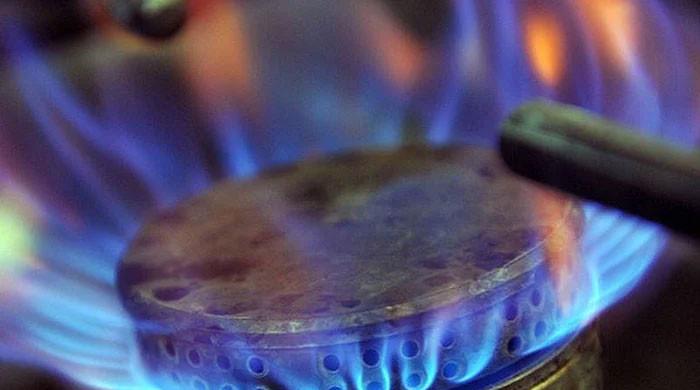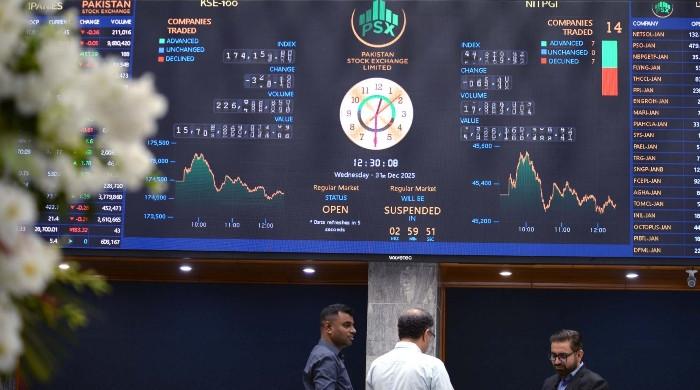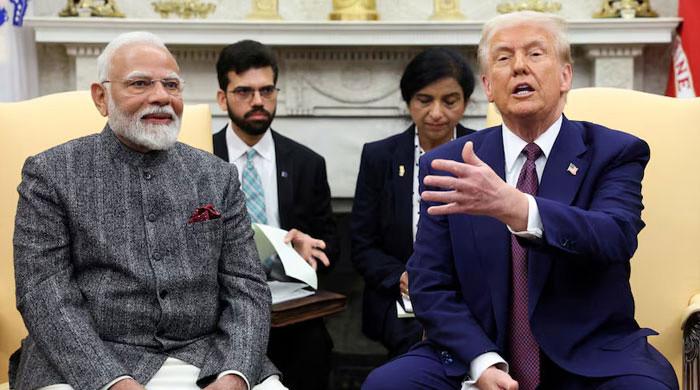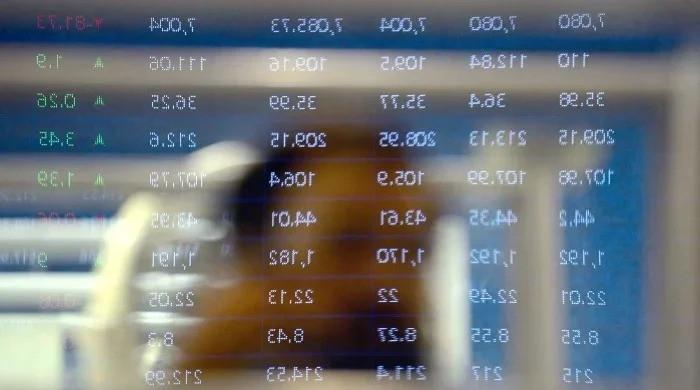Remittances may keep Pakistan's current account deficit 'manageable': finance ministry
In economic outlook, finance ministry terms increasing current account deficit, higher inflationary pressures as major challenges
December 28, 2021
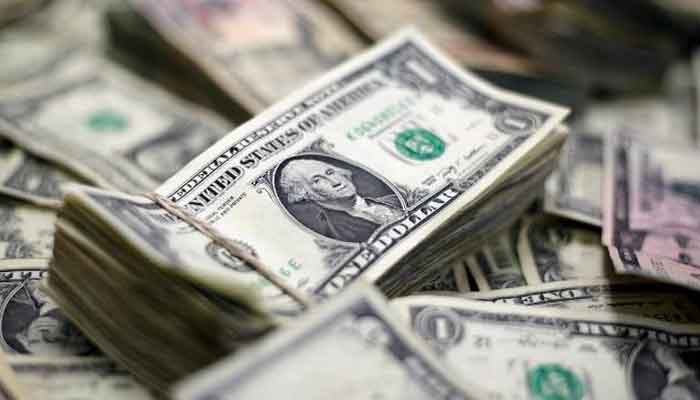
- Finance ministry points out increasing current account deficit and higher inflationary pressure as major challenges.
- Says expected improvement in trade balance will reflect in reducing current account deficits, allowing manageable deficits.
- Says government is making administrative, relief and policy efforts to reduce inflationary pressures in coming months.
ISLAMABAD: The Ministry of Finance — highlighting the increasing current account deficit and higher inflationary pressure as major challenges —has expressed reliance on higher and stabilised remittances in keeping the current account deficit "manageable and financeable", in its forecast, The News reported Tuesday.
In its Monthly Economic Update and Outlook released Monday, the finance ministry said that "assuming sustained remittance inflows, the improvement likely to take place in the trade balance will be mirrored in reducing current account deficits, allowing for manageable and financeable deficits."
The ministry's stance on higher inflation was that the year-on-year (YoY) inflation hiked in recent months. Higher global commodity prices, electricity charges, house rent and transportation costs are among the major contributors to inflation but the government is making administrative, relief and policy efforts to reduce the inflationary pressures in the coming months.
The Ministry of Finance conceded that the current account deficit was touching levels of 2018 when it had touched $18 billion and the PTI had always blamed the former PML-N government that it had inherited an economy in a shambles.
“The current account posted a deficit of $7.1 billion (5.3 percent of GDP) for Jul-Nov FY2022 as against a surplus of $1.9 billion (1.6 percent of GDP) last year. Previously, the current account deficit was $7.2 billion (5.5 percent of GDP) during July-Nov FY2018,” the Ministry of Finance made it clear.
The current account deficit widened due to the constantly growing import volume of energy and non-energy commodities, along with a rising trend in the global prices of oil, Covid-19 vaccines, food, and metals. Exports on fob grew by 28.9 percent during July-Nov FY2022 and reached $12.3 billion ($9.6 billion last year).
On inflation, the Ministry of Finance said Pakistan’s inflation rate is driven by the international commodity prices, exchange rate, seasonal factors, and economic agents’ expectations concerning the future developments of these indicators.
The year-on-year (YoY) inflation has increased in recent months. This increase in inflation is mainly derived from electricity charges, fuel, house rent, transport, and non-perishable food items among the largest contributors.
The price adjustments were directly and indirectly induced by a recent exceptional increase in international commodity prices and exchange rate movements.
It is expected that MoM inflation will soften in December. International oil prices have retreated somewhat from previous highs. The exchange rate continued to slightly depreciate but the government efforts to dampen the pass-through of high international food prices into domestic retail markets continue.
At present, the government aims to increase agriculture productivity by taking multiple initiatives to ensure food security by countering food inflation in the future.
“The low base effect may contribute to keeping inflation rate of December in double-digit. Although, the forecast probability margins are wide, most likely, YoY inflation is expected to remain in double-digit in December but slightly less than the last month's number,” the Ministry predicted.
According to Balance of Payment (BOP) data, exports of goods and services increased by around 13 percent in November as compared to October. They have now settled well above the 3 billion USD mark and are expected to climb further in the coming months so as to reach a new higher level for the foreseeable future. This strong export performance is the result of several positive factors.
First, although the cyclical position in the main trading partners as witnessed by the Composite Leading Indicators (CLI) seems to stabilize, the underlying growth trend in those countries remains very strong, following the recovery in their potential output growth.
Second, Pakistan’s Real Effective Exchange rate has been improving significantly in recent months.
Third, the domestic economic dynamism remains strong. Fourth, specific government policies to stimulate exports are bearing fruit.
The main risk factor here is the appearance of a new COVID-19 variant, of which the effects on economic activity are still unknown. BOP data further indicated that imports of goods and services increased about 5% in November compared to October.
Strong domestic economic dynamism requires imported energy, capital goods and intermediate goods, necessary in the production process. Furthermore, the recent increase in international commodity prices have inflated the cost of these imported goods. However, imports may settle at lower levels gradually in the coming months.
Imports are indeed expected to react to higher domestic interest rates, given the historically observed negative interest rate effect on import demand.
Furthermore, the government continues on implementing measures to curb unnecessary imports and to supply domestic alternatives in some markets, especially food products. Also, the baseline scenario is based on a downward correction of international commodity prices.
On the basis of these events, the trade deficit will stabilize in coming months. The expected developments in export and import activities imply that the trade balance may gradually improve in coming months and settle down at significantly lower levels in the second half of the current FY.
The government’s fiscal consolidation efforts are paying off in terms of improved fiscal accounts. During July-Oct FY2022, the growth in net federal revenues outpaced the growth in expenditures.
Resultantly, the fiscal deficit has been brought down to 1.1 percent of GDP during the first four months of FY2022 against 1.7 percent of GDP in the same period last year.
With prudent expenditure management and an effective revenue mobilization strategy, it is expected that the overall fiscal deficit would remain within the reasonable level. The FBR tax revenues are performing remarkably well and continue to surpass its revenue target during the first five months of the current fiscal year.
It shows that FBR is well on its way to achieving the assigned target for FY2022. It is worth mentioning that various tax reforms are underway to improve the documentation and maximum taxpayers facilitation that will further improve the tax collection and support in achieving the target set for the current fiscal year.
In the first four months of the current FY, Pakistan remains on a higher growth trajectory, accelerating from the growth rate observed in FY2021. However, inflation may ease out in the coming months due to the declining commodity prices in the global market.
In addition, relief may also come from continuous government efforts to soften food prices in the local markets by following appropriate fiscal and monetary policies.
While these developments and policies may keep the monthly price dynamics in check, the current stress on the trade balance is expected to soften, easing exchange rate pressure and subsequently stabilizing the MoM inflation, the report concluded.





